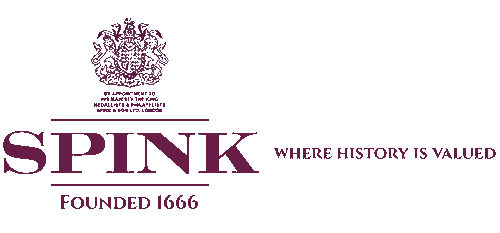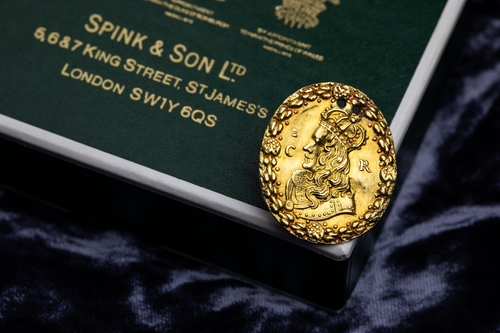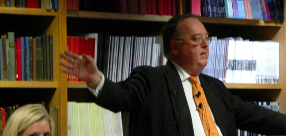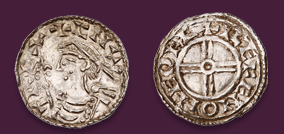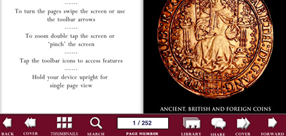Auction: 25360 - The 360th Anniversary Sale
Lot: 9
HIS MAJESTY THE KING'S SOLICITOR GENERAL'S ROYAL GOLD BADGE FROM THE REIGN OF CHARLES II
Solicitor General's Royal Gold Badge, c. 1660-1670, unsigned, but attributed to Thomas Rawlins, crowned, armoured and draped bust left, C2-R across field, surrounded by floral oak border, rev. as before, 25mm x 29mm, 4.77g, 12h (E. Hawkins Medallic Illustrations [1885], Vol. I, p. 446, no. 23 [Unpublished in Gold]; Murdoch [1904], 209b [Silver]; Eimer 205 variety; Dr Jerome J. Platt, lot 107 [Silver]).
Struck in low relief upon two embossed clichées soldered; with historic scratches to King's cheek and a hint of crimping to foils, a very rare Restoration Supporters' Badge, presumed UNIQUE in gold, and of the greatest historical interest as pedigreed to the family of Sir Francis Winnington.
Charles II (29 May 1630 - 6 February 1685) was King of Scotland from 1649 until 1651, and after his Restoration in 1660, King of England and Ireland until his death in 1685. He was the eldest surviving son of King Charles I and Henrietta Maria; whose own medallic legacy is as broad as it is artistically rich. After the regicidal execution at Whitehall on 30 January 1649, the Parliament of Scotland proclaimed Charles II as King on 5 February.
Royal favour and likewise reciprocal fealty, both civic and bellic, was established with the gifting and wearing of such badges as the present specimen. As Edward Hawkins (Medallic Illustrations, Vol. I, pp. 437-446) has noted: "The following badges were doubtless worn as medals or ornaments, and were indications of affection to the monarchy, either upon the prospect of its speedy restoration or upon its actual re-establishment… all must have been executed, as the portraits and dress show, during the King's exile or very early in his reign." Compelling evidence for this is to be found in contemporary surviving documents archived with the Office of the Privy Council:
Sir John Smythe of Lord Grandison's Horse and Sir Robert Welch of Wilmot's Horse were honoured on 1 June 1643 with "a gold medal with the effigies of himself [the King] and his son to the chief personages who have aided the Royal cause" in response to their gallant conduct in rescuing the Royal Standard at the Battle of Edgehill. The original instruction to Sir William Parkhurst and Thomas Bushell, Wardens of the Royal Mint at the Tower of London elaborates this matter further: "We are not satisfied by having imparted to them the true sence we conceive of their dutifull affections in Our Letters, and Our Verball thanks for the same, without leaving some more durable Monument of Our Royall Grace, and favour to remaine in after ages, as an Evidence of their Fidelity to their Prince and Country. We have therefore caused Our owne Royall Image, with that or our dearest Sonne, Prince Charles, to be impressed on a Medall of Gold, and a Commemoration of his well-deservings to whom it was designed, to be inscribed on the Reverse, whereby his Posterity may assume the Glory that their Ancestor stood Loyall to their Sovereigne when the Malignity of Rebellion had neere covered the face of his flourishing Kingdom. Theses Medalls We require that your present in Our Name with your owne hands to those worthy Personages, as they are severally nominated, and to certifie to Vs who are remayning more in Our said County, which have deserved such Memorialls, to whom We shall thereupon accordingly confer the same." [sic]
As Helen Farquhar separately summarised: "such evidences of loyalty were after the King's death a danger to the owners, and the temptation to melt the Gold was strong - although when their services had been called for by Charles, not only their plate, but their lives, had [often] been proffered for his cause."
An equally compelling story now relates the history of this unique object. Evidently personal, likely a Royal presentation, or at the very least of close Royal association, genealogical research only solidifies its remarkable pedigree. Prior to its appearance at Messrs Sotheby in 1949, this prize was in the possession of spinster Margaret Warre. The third of four daughters by her clergyman father; her paternal grandmother heralded from a scion of the Calverts of Hunsdon House. Through a succession of Parliamentary Members and a childless-uncle, Felix Calvert MP was the grandson of Sir Francis Winnington, late Solicitor-General to His Majesty King Charles II. It is likely that his own father Major Winnington was the very same who surrendered the Royalist Garrison at Worcester during the Civil War.
His meteoric rise through influential court circles began with his appointment as standing counsel to Prince Rupert in the decade after being called to the Bar ex gratia. His license to practice from 9 February 1660, occurred just one week after General George Monck, 1st Duke of Albemarle had entered London to recall Parliament and initiate the articles of Restoration of King Charles II. An evidently loyal confidant to the Crown, he was soon appointed Attorney-General to the Duke of York, the future King James II (whose touch-piece is offered as lot 12). He proclaimed that 'he stood obliged to Prince James above all other persons'. On 17 December 1672, he was knighted. Two years later, the King appointed him Solicitor-General to the Crown, and by further personal request, as Member of Parliament for Windsor in 1677. This prestigious role granted Winnington enhanced political influence over the Royal Borough not least for its hosting the famous Royal residence frequently occupied at the Sovereign's pleasure. His appointment evidently reflected his familiarity with the Castle learned through his defence of Lord Mordaunt, her constable, against Parliamentary impeachment in 1666, a lesson that would prove useful later in life. Surviving fee-books at Stanford Court (Worcs) document Winnington's annual income during this period. Approaching 4,000l. per annum, this supreme salary entirely befits the exclusive grandeur of this award; whether he privately commissioned Rawlins or was the recipient of the King's benevolence remains tantalisingly unclear with either remaining conceivable and possible.
As hysteria swirled regarding the threat of the Catholic cause in England, Winnington found himself at increasing odds with his Royal patrons. Over the course of Spring 1678, his position on the matter evolved leaving to the following proclamations to the Chamber:
"I am obliged to maintain the King's prerogative by the place I hold, and the privileges of the House as a Member of it."
"If what I say be not acceptable to the House, I protest I speak it not out of favour to the Duke, but for the preservation of the Protestant cause. Now that this thing is brought on, let us do like honest men and Protestants. If we divide upon the question, the Papists will have more encouragement than the Duke ever gave them."
Upon the second reading of the bill that originated from the committee on which he served, he voted it down, adding without apology:
"All these dangers, past and present, do arise from Popery; and how impossible it is it should be otherwise as long as there is a popish successor.... "
However, in a piece of political subterfuge worthy of its own documentary, the convenient surfacing of "the Danby letters" at this time found him to be in direct contradiction with his own assurances to the House. Despite declaring the letters treasonable, the subsequent dissolution of Parliament led to his prompt dismissal from office as Solicitor-General. Returned to Parliament now as Member for Worcester, his fortunes swayed from ridicule to begrudging respect, often overcome by the extraordinarily political head-winds at play in 17th Century England as much as a bout of constitutionally-inspirational oratory. Despite railing against the Popish plotters and the looming Coronation of King James II, he declared a 'Regency Act' nonsense, for: "to make a man King and not suffer him to exercise kingly power is a contradiction". Until his passing in May 1700, he remained a staunch defender of the House and the dissemination of its rulings, for as he opined: "I think it not natural nor rational that the people who sent us hither should not be informed of our actions."
In life he was a skilled horse man; in death, his legacy was the commencement of an important political dynasty, very much worthy of this Royalist Gold Badge, as much as a splendid miniature by celebrated Royal artist Sir Peter Lely that also remained in the family possession into the 19th Century.
Provenance
From the Baumhauer Collection of British Medals
Edward St George, Spink Auction 120, 9-10 July 1997, lot 399*
Reverend Arnold Mallinson, Spink Auction 39, 7 December 1984, lot 107*
Miss Agnes Margaret Warre (1864-1946), Sotheby's, 24 May 1949, lot 16 - "doubly pierced, very fine and very rare" - £9.10.0 [Spink for Mallinson]
Reverend Francis Warre (1834-1917), thence to his daughter
Mary Caroline Felicia Calvert (1809-1895), thence to her son
Nicolson Calvert, the Younger MP (1764-1841), thence to his daughter
Nicolson Calvert, the Elder MP (1724-1793), of Hunsdon House, Co. Herts, died without issue; Estate to his nephew
Felix Calvert MP (1693-1755), of Albury Hall, Co. Herts, thence to his son
Mary Winnington (1673-1729), of Marcham, Co. Berks, thence to her eldest son
Sir Francis Winnington (1634-1700), Solicitor-General to King Charles II, and Member of Parliament for Windsor, thence to his daughter
An oil-on-vellum miniature of this sitter is preserved in the National Portrait Gallery (NPG 305)
Subject to 20% VAT on Buyer’s Premium. For more information please view Terms and Conditions for Buyers.
Estimate
£3,000 to £5,000
Starting price
£3000
